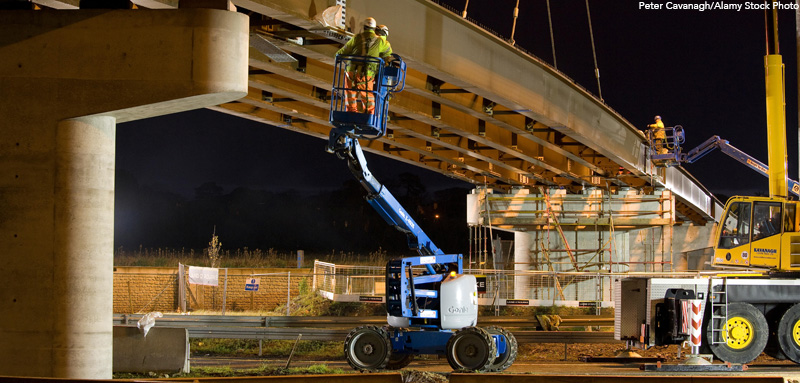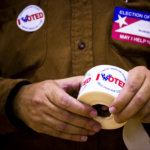
Congress Passes Massive Infrastructure Package
On November 5, 2021, Republicans and Democrats in Congress agreed to pass a $1.2 trillion infrastructure package. (Infrastructure means the physical and organizational structures needed to keep the country running. This includes such things as roads, bridges, and power supplies.) Here, Election Central takes a closer look at what exactly is in the bill, as well as what people for and against it are saying.
Where Will the Money Go?
Here’s how the new law breaks down:
- $110 billion for roads, bridges, and major infrastructure projects
- $40 billion for bridge repair, replacement, and maintenance
- $16 billion for other major projects, such as efforts toaddress climate change issues
- $11 billion for transportation safety efforts, including reducing crashes and fatalities
- $1 billion to reconnect communities – often communities of color – that were previously divided by highway construction
- $105 billion to update and improve public transit and railroads
- $65 billion to improve broadband infrastructure
- $42 billion for shipping ports and airports
- $15 billion for zero- and low-emission buses, ferries, and electric vehicle chargers
- $65 billion to improve the nation’s electric grid
- $55 billion to upgrade water infrastructure, such as removing lead from water pipes
- $50 billion to protect the water system from drought, floods, and cyberattacks
- $21 billion to clean up past environmental problems, such as abandoned mines and gas wells
Understanding the Need
Much of the nation’s infrastructure was originally built in the 1950s and 1960s. That means that bridges, dams, and roads are beginning to age and even fail. In fact, the American Society of Civil Engineers rated the country’s infrastructure system as a C- earlier this year. According to the White House, twenty percent of the nation’s highways and roads, as well as 45,000 bridges, are in poor condition. Beyond the safety concerns, poor roads cause people to waste time and fuel in traffic. It causes damage to vehicles and can lead to costly delays in transporting important goods from one place to another. Also, improving access to safe drinking water or reliable Internet closes the gap between advantaged and disadvantaged neighborhoods across the United States.
Responses to the Legislation
The White House claims these infrastructure improvements will generate $56 billion long-term to help pay for the very large expense. There were also no additional gas taxes or fees for electric vehicles added to the spending.
The Congressional Budget Office calculated that in its current form, the bill will add about $256 billion to the federal deficit over the next decade. Some Congressional Republicans were and are against this level of spending. Their reluctance slowed the passing of this bill for months. To get enough Democrat and Republican support, the Biden administration had to drop several things that were included in earlier versions of the legislative package. This included more Medicaid spending to improve caregiving for elderly Americans. The new law also had to cut more spending for improving the health treatment of people with disabilities. Billions of dollars planned to help with job services for young people and the unemployed were also taken out of consideration. Republicans also won negotiations to prevent raising the corporate tax rate and defeated another provision that would add more taxes to corporations.


